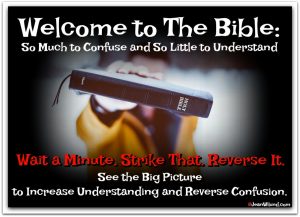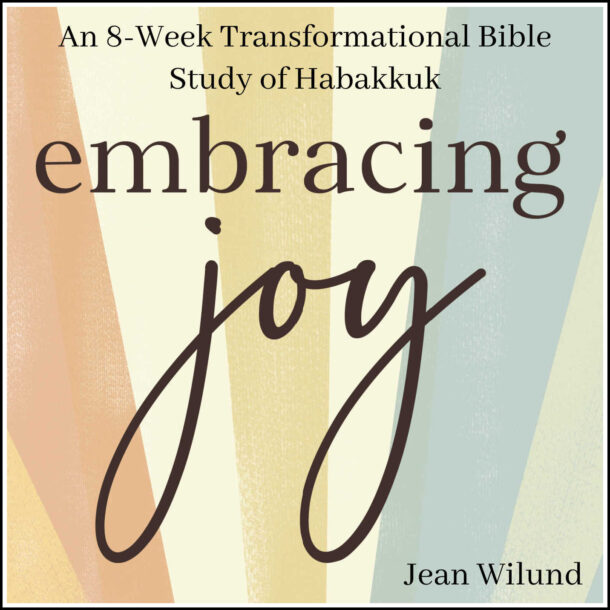How Are the Books of the Old Testament Organized?
Are you like me? Did you assume the Old Testament is in chronological order?
It starts out like that in Genesis. “In the beginning . . . Day one . . . Day two. . . Then . . .Then . . .”
It continues like this through Exodus.
But then the books begin to intertwine. And the timing of events becomes confusing if you think it’s all written in chronological order.
So, how are the books of the Old Testament organized?
They’re ordered in groups by the five main types of literature contained within the Old Testament.
Literature teachers around the world just smiled.
The Order of the Old Testament
1. Law (Pentateuch) — Genesis, Exodus, Leviticus, Numbers, and Deuteronomy
Collectively, the first five books of the Bible are called the Pentateuch or the Law of Moses.
The Jews call it the Torah, which means Law, but the Pentateuch is far from just a list of laws and rules.
The Pentateuch is not a list of Shalls and Shall Nots.
It’s the beginning of the compelling and true story of the whole Bible — God revealing Himself to man and restoring man back into relationship with Him.
But what does Law have to do with the story?
The story begins with how God created a perfect world, which man wrecked by bringing sin into it when he broke the one law God had given.
The story continues throughout the first five books.
It shows how God’s plan, which He set from eternity past, for our salvation through Jesus began to unfold. Part of this plan involves His giving Moses and the nation of Israel the Law of Moses.
The Law is our teacher.
It teaches us the depth of our sinfulness and our utter inability to keep the law and thereby save ourselves. And it reveals our desperate need for a Savior. Our need for Jesus. (Galatians 3:19-25)
2. History —Joshua, Judges, Ruth, I & 2 Samuel, 1 & 2 Kings, 1 & 2 Chronicles, Ezra, Nehemiah, and Esther
These authors tell the storied history of Israel with its rise and fall of kings, particularly David, and a few nasty queens.
Ever heard of Jezebel? Not a nice lady.
God weaves in hints of Jesus through it all, including the sobering, tragic stories of what happens when people run after other gods, which are only false gods.
Hint: It never ends well. But it certainly confirms God’s grace is staggering.
3. Wisdom & Poetry — Job, Psalms, Proverbs, Ecclesiastes, and Song of Solomon
These books are written in poetic form and filled with wisdom and truth, as well as pictures of Jesus and His love for His people.
King David, his son Solomon, and many others wrote to encourage faith in and obedience to God.
4. Major Prophets — Isaiah, Jeremiah, Lamentations, Ezekiel, and Daniel
Prophets were God’s special spokesmen. They acted as preachers of God’s Word, predictors of the future, and watchmen over the lives and hearts of Israel.
These prophets wrote during the time of the kings, after King David.
David’s son Solomon didn’t rule as you’d expect a man to whom God had give such wisdom to rule. He worshipped other gods as well as the one true God.
After Solomon died, God ripped the nation of Israel into two kingdoms. Israel in the north and Judah in the south “Because they have forsaken Me . . . and have not walked in My ways” (I Kings 11:33). (See I Kings 11:30-34.)
Some of the prophets wrote to Judah. Others wrote to Israel.
Some wrote before the Babylonian exile when Judah was taken captive to Babylon. Some wrote after the exile ended and many returned to Jerusalem, Judah’s capital and where God’s temple had been.
They all warned them of danger and pointed to the coming Savior, Jesus.
The “Major Prophets” weren’t more important than the “Minor Prophets.” They just wrote longer books.
Isaiah has 66 chapters.
Jeremiah has 52.
The prophet Jeremiah also wrote Lamentations. It only has five chapters, but since Jeremiah wrote it, it gets to hang out in the Major Prophets category.
5. Minor Prophets — Hosea, Joel, Amos, Obadiah, Jonah, Micah, Nahum, Habakkuk, Zephaniah, Haggai, Zechariah, and Malachi
The Minor Prophets are short books with big messages also written by prophets.
Each focus on Israel’s relationship with God. They warned Israel of the importance of following the Lord and revealed important aspects of God’s character.
Many, like Jonah, contain some of the clearest pictures of Jesus. (Matthew 12:39-41)
Obadiah only has one chapter. Hosea and Zechariah are each 14 chapters long.
[bctt tweet=”Ever wondered how the Books of the Old Testament are organized & what they’re about? #Biblestudy #Jesus” username=”jeanwilund”]
 We’ve only looked at a snapshot of the Old Testament books.
We’ve only looked at a snapshot of the Old Testament books.
Next time we’ll look at a similar glimpse of the New Testament books.
Then we’ll start diving deeper.
We’re getting our feet wet in the Bible one toe at a time.
PREVIOUS POSTS IN THE SERIES
In case you missed these earlier posts in the Welcome to the Bible series, click the photos:
1) An Introduction to this Introduction to the Bible:
See the Big Picture
2) An Overview of Who Wrote the Bible:
A Thick Book With Lots of Authors
3) Books, Chapters, & Verses, Oh My!:
Why Two Testaments?











Love this Jean and looking forward to going deeper in this series.
Thanks, Darrell. I’m glad you’re enjoying the series. A friend of mine and I got the idea when we wanted to give someone a simple way to understand the Bible. Next is how the New Testament is organized. Thanks for reading and encouraging me!